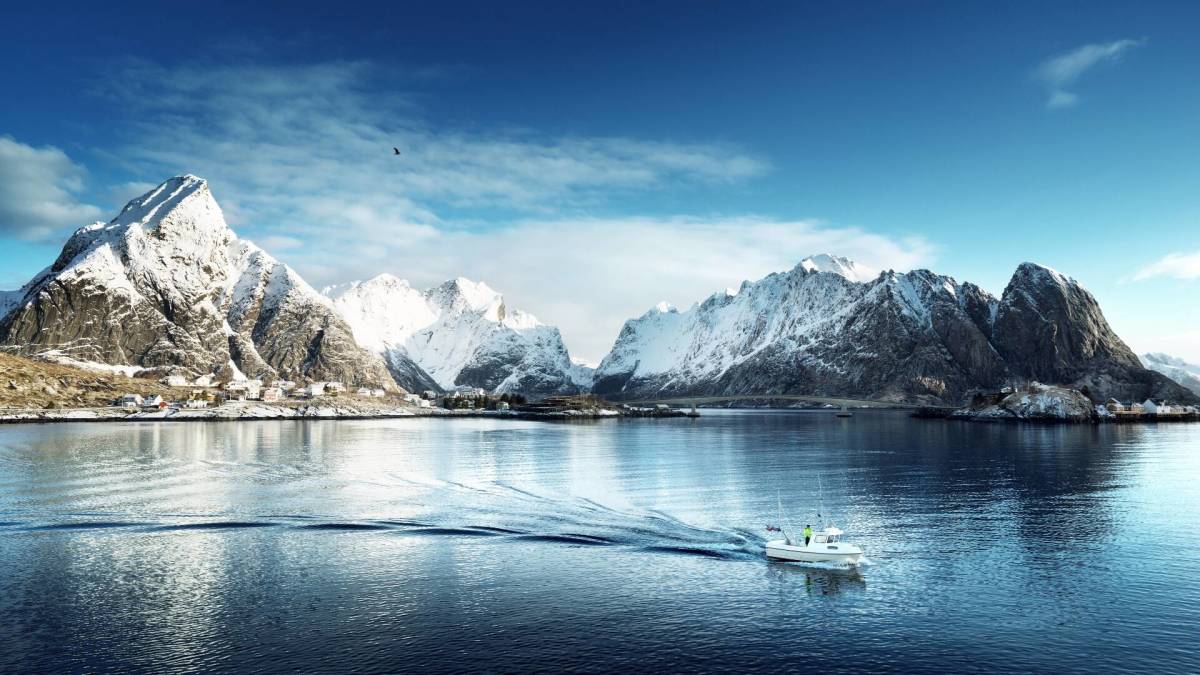While Norway is associated with its fjords and majestic coastal landscapes, travelers have to go beyond the easily-accessible capital of Oslo to experience many of the views that likely pulled them toward the country.
Both the midnight sun and northern lights at their most vivid can only be experienced north of the Arctic Circle, while the increasingly Instagram-popular Lofoten Islands can be reached by regional airport, cruise, or ferry.
An archipleago of seven islands and two main towns, the Lofoten are located approximately 749 miles or 1,195 kilometers north of Oslo and are known for their dramatic mountain-ocean landscapes and Arctic cod fishing communities that date back to the Viking periods.
Don’t miss the move: SIGN UP for TheStreet’s FREE Daily newsletter
Dreaming of the Lofoten Islands in Norway? This is how you get there
The Lofoten Islands’ unblemished nature and unique culture are influenced primarily by the fact that they were, up until a very recent stretch of history, isolated from the rest of the world.
Separated by the 97-mile Vestfjorden, the islands were first connected to the rest of Norway by the coastal ferry service Hurtigruten on the DS Vesteraalen steamship in 1893.
In the years following the Covid pandemic, the number of visitors to the Lofoten Islands has reached one million annually and is expected to rise as the area becomes increasingly popular with tourists.
Regional airports Leknes (LKN) and Svolvær (SVJ) connect the two towns to flights from the larger cities in Norway.
Related: There could soon be more flights to Iceland from Denver and Nashville
The Hurtigruten, meanwhile, docks in the Svolvær and Stamsund ports as part of its northward and southward journeys along the Norwegian coast. There are also smaller regional ferries from the town of Bodø — home to the larger BOO airport — while some also opt for express or chartered boats.
But for most travelers, a short cruise stop ends up being a first introduction to a archipelago they would not otherwise reach.
Moved by a scenery of fishing houses and jagged green mountains rising from a boundless sea, the most dedicated among them then come back for a longer trip.
They can engage in adventure activities such as fishing, hiking, and kayaking. Due to the distance between different fjords and mountain rages, a car rental and the ability to devote more time are essential.
Visitors sometimes also hop onto the ferry for a leg of their journey.
Image source: Shutterstock
As tourism increases, remote parts of Norway see both new life and new challenges
While the Lofoten are served by both major cruise lines like Norwegian (NCLH) and smaller luxury ones like Viking and Silversea, Hurtigruten is unique in that it offers both the cruising itineraries and ferry tickets for locals and travelers looking to get between stops.
When established at the tail end of the 19th century, it was pivotal in transporting goods and forging access to some of the country’s most remote communities.
More on travel:
- United Airlines places big bet on new flights to trendy destination
- Government issues new travel advisory on popular beach destination
- Another country just issued a new visa requirement for visitors
The abundance of access that emerged in recent years has fundamentally altered a community that for generations has been marked by seclusion.
The strain of hundreds of thousands of visitors to the Lofoten islands, which have a permanent population of just 25,000 people, has stretched local resources.
This prompted the Norwegian government to introduce an upcoming “tourist tax” on overnight stays, but it has also created new ways for a broader class of travelers to experience the sublime landscapes in a new tourism hotspot.
(The Arena Group will earn a commission if you book a trip.)
Make a free appointment with TheStreet’s Travel Agent Partner, Postcard Travel, or email Amy Post at amypost@postcardtravelplanning.com or call or text her at 386-383-2472.



















